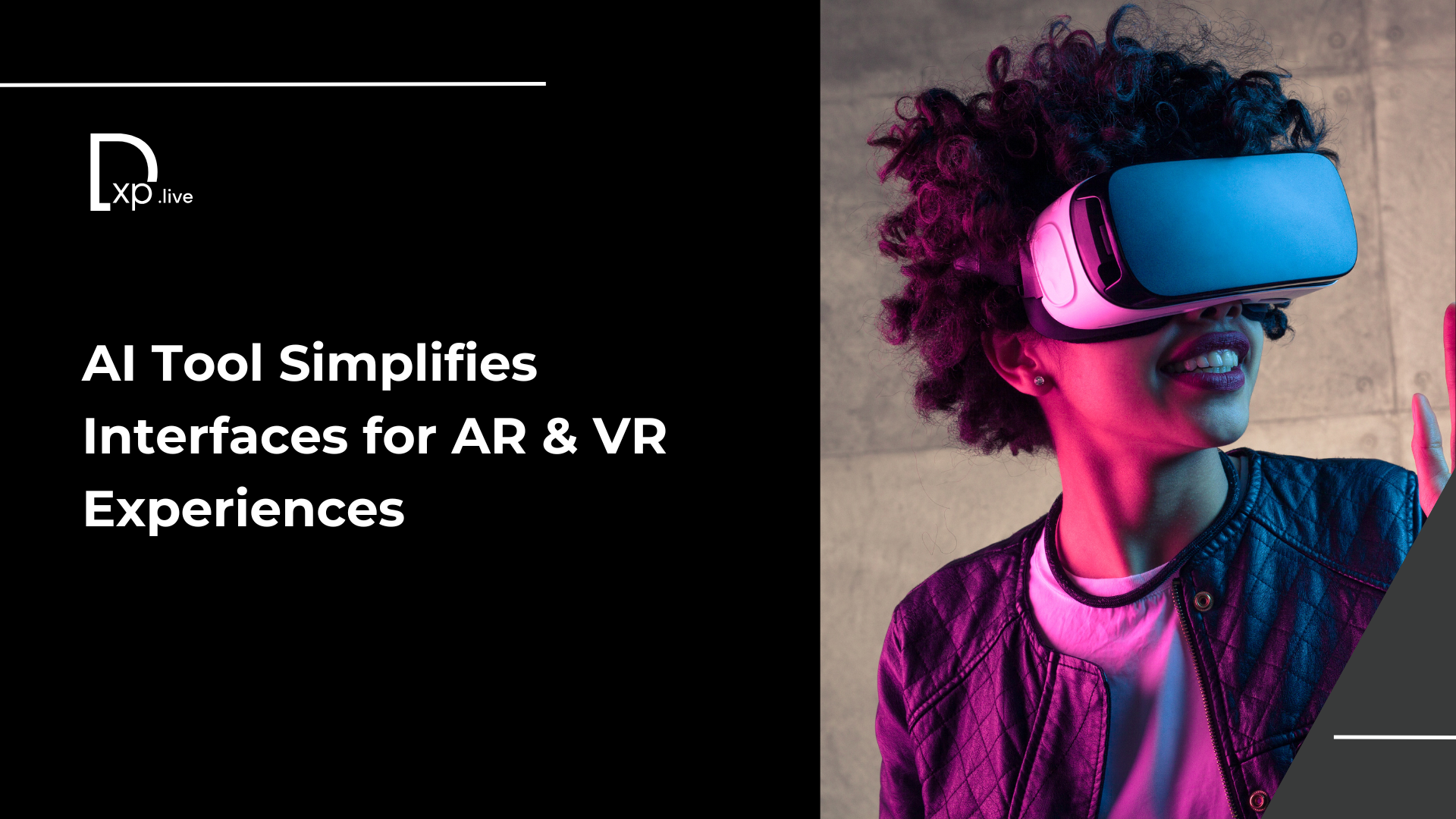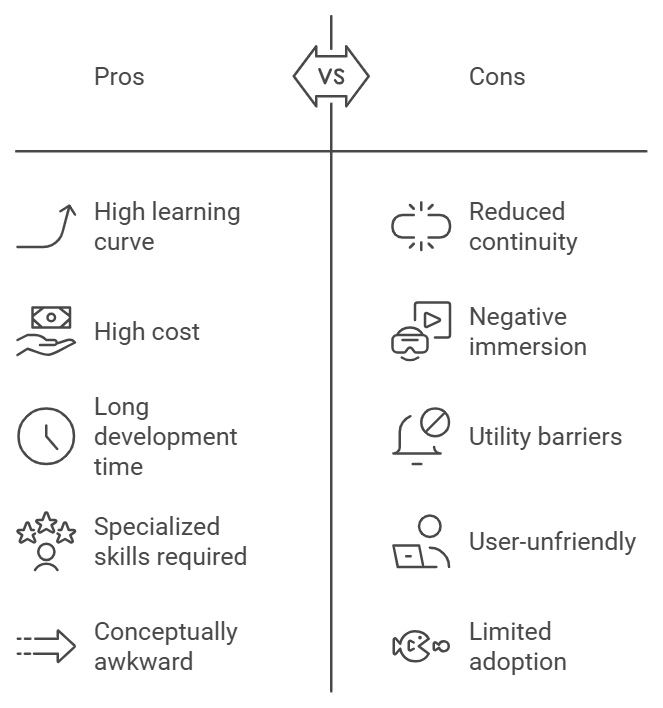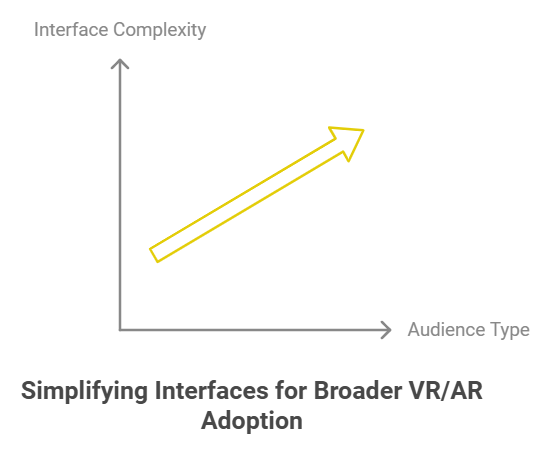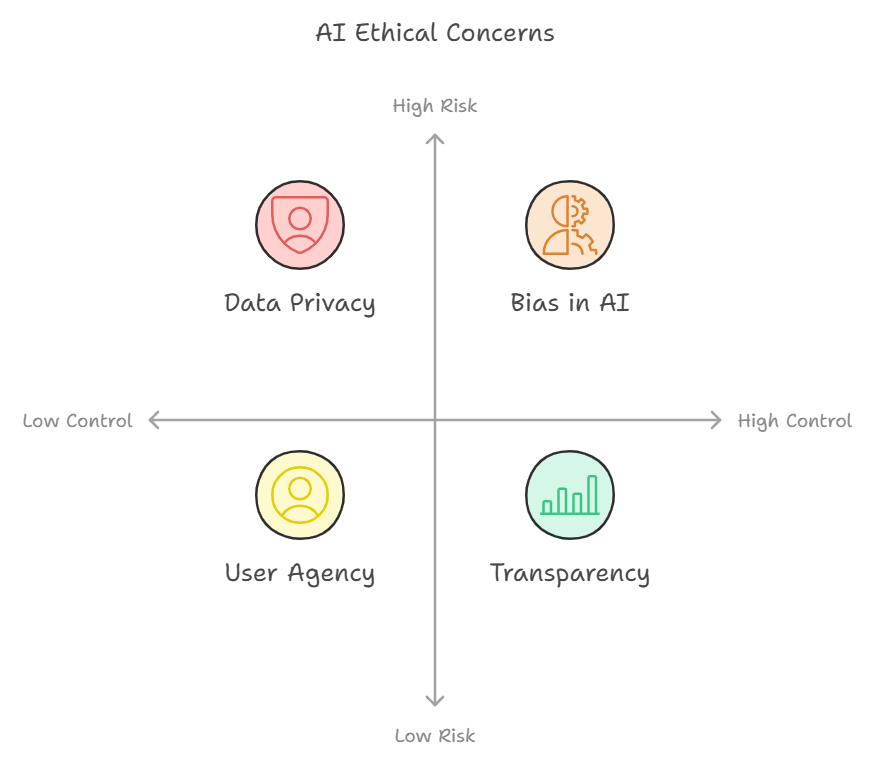AI Tool Simplifies Interfaces for AR & VR Experiences

It is projected that the VR/AR markets will stack up to $200 billion market by 2030 as artificial intelligence improves VR/AR interfaces. AI is reversing interface design, enabling faster and easier deployment of the underlying interactions that are crucial to VR and AR. This breakthrough allows the creation of smooth, mergeable interfaces that would alter their appearance based on the user’s activity and requirements. Ease of use is important in acting as a major enabler of penetration since few number of users are always comfortable working within steep systems that are mainly provided by technological interfaces inherent in emerging technologies such as augmented realities. However, as we see how AI is revolutionizing AR/VR, making their mainstream integration seems more possible than it has in the past.
Current Challenges in VR/AR Interfaces

The existing issues with VR/AR interfaces affect end consumers as well as engineers. Because of the complexity of the interfaces, the users have high learning curves that would reduce continuity as more time is needed to learn the interface and how to maneuver through it, and some of the users are not technically inclined. Challenges in development include high cost, long development time, and requirement for specialized skills which also add to the challenges of creating high-quality VR/AR interfaces. For instance, conceptually awkward, or clumsily executed interfaces negatively affect the immersion and utility of the respective experiences, and therefore serve as a barrier to broader adoption. As with all software, developers wish to make VR/AR interfaces as user-friendly as possible while ensuring that the user does not sacrifice usability for tractability. These issues are important to be solved for expansion of existing and adoption of new VR/AR platforms across various sectors.
How AI Transforms Interface Design
Therefore, if we need to opt in for a description of the Google NLP, SEO friendly – How AI Transforms Interface Design, it is essential to underscore new trends in artificial intelligence innovations for interface design to include the LNJ (natural language), gesture, and visual interfaces for virtual and augmented reality environments. New and improved forms of deep learning and human-computer interaction have made it possible for the latter to support more naturalist interfaces in all these frontiers and thereby push forward development in VR/ARs and increase accessibility. This sort of transformation also means the automation of operations that makes interface design both quicker and more in touch with the user’s requirements for fluid interactions with digital tools.
Positive examples of successful cases could be, for instance, applied to the design of language models in Open AI, or to meta-focusing on the development of the technology for improving the interaction between user and VR/AR systems as well as developing the interfaces that would be easily understandable by the general public. This approach is compliant with the Google E-E-A-T standards, relying on the quality, relevance, and advantages of AI-assisted design.
Why Simplified Interfaces Matter for VR/AR’s Future

One major trend is around carefully simplifying interfaces since non-technical audiences will form the next wave of VR/AR adoption. Interactive interfaces enable users in sectors such as education, healthcare, games, and business to navigate into appealing environments without steep learning curves. In education, simple and efficient VR/AR interfaces will help the students to interact with the virtual models thus increasing their efficiency, memory, and comprehension. Healthcare givers are also advantaged by ease of use especially where the use of VR for instance for medical training and treatment.
Moreover, the application of simplified interfaces contributes to equalizing virtual and augmented reality by opening the door to new participants both from the creators’ and consumers’ sides. This shift creates opportunities to develop new paradigms enabling small entrepreneurs and independent artists to contribute toward the development of VR/AR platforms irrespective of their programming skills or lack thereof. Consequently, the proliferation of related technologies will enhance user experiences in several industries, extending the application of VR/AR beyond simple specialization.
Concerns and Ethical Considerations

Concerns and ethical considerations in AI technology, particularly in virtual and augmented reality, are essential for building trust and ensuring responsible development. Data privacy remains a top priority as AI systems handle vast amounts of sensitive user information. Collecting personal data through facial recognition, IoT devices, and social media interactions presents privacy risks, making transparent data collection methods and secure handling practices vital.
Bias in AI is another concern, especially when designing interfaces that cater to diverse users. Ensuring inclusivity through diverse training data and regular algorithm reviews can help mitigate bias.
Additionally, maintaining user agency is crucial, as excessive automation may reduce users' control. Striking a balance between convenience and autonomy will help maintain user trust and ensure ethical AI deployment.
What’s Next? The Roadmap for AI in VR/AR
The use of AI in VR/AR to forecast how people interact with technology is set to reinvent human-computer interfaces by 2030. Tech experts further contend that AI will make it easier to interface as the technology will develop workability that can be managed through natural language and gestures.
The idea is to see self-learning that adapts to the users and turns VR/AR spaces into user-specific areas.
This we believe will be propelled through cooperation between giants like Apple and young startups in this industry. Collaborations will be the essential components for realizing the benefits of AI, advancing the possibility of AI agents as avatars and immersive training models.
These collaborations will also include sectors such as healthcare, games, and education in which AI can improve actual use cases like robotic surgeries from a distance or cognitive learning environments.
In summary, AI tools are transforming the way virtual and augmented reality (VR/AR) interfaces are designed, pushing the boundaries of user experience. By simplifying complex interactions, AI allows for intuitive, adaptable, and immersive environments. These advancements include personalized interface designs, real-time adjustments based on user behavior, and predictive analytics that anticipate user actions. As AI continues to evolve, it empowers developers to create more engaging and accessible AR/VR experiences. Embracing these technologies unlocks new possibilities for industries ranging from gaming to healthcare and education. Now is the time for creators and businesses to explore AI-driven AR/VR interfaces and leverage their full potential to revolutionize user engagement.
Be at the forefront of technological innovation! Join our vibrant community to unlock expert insights, exclusive content, and the latest news on AI, IoT, and cutting-edge retail solutions. Stay informed, get inspired, and be part of the conversation—subscribe digitalexperience.live today for your gateway to the future!
FAQs:
1. How is AI used in AR and VR?
AI enhances AR and VR by enabling smarter, more responsive environments. It powers real-time interaction, object recognition, and adaptive learning systems, making these immersive technologies more intuitive and engaging.
2. What software is used in VR and AR?
Popular VR/AR software includes Unity, Unreal Engine, and Vuforia. These platforms support AI integrations, providing tools for creating interactive and immersive environments in gaming, training, and other industries.
3. In what ways can AI and VR be integrated to improve the user experience on the web?
AI and VR can be combined to create personalized, adaptive web experiences. AI-driven VR interfaces can adjust based on user preferences, making navigation more intuitive and content more immersive.
4. What is AR/VR tools?
AR/VR tools are software and hardware used to create and interact with augmented and virtual realities. These tools enable developers to build immersive experiences that blend digital elements with the real world or create entirely new virtual environments.



